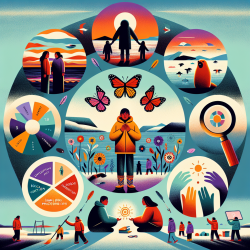Introduction
Suicide rates among the Greenland Inuit have been a subject of concern for decades, with the nation experiencing some of the highest rates globally. A recent study titled "Time trends and geographical patterns in suicide among Greenland Inuit" provides an in-depth analysis of these trends, offering insights that can guide practitioners in improving mental health outcomes, particularly for youth.
Understanding the Data
Between 1980 and 2018, Greenland saw an average suicide rate of 96 per 100,000 people annually, with peaks in the 1980s. The study reveals a decline to 81.3 per 100,000 from 2015 to 2018, primarily due to a decrease in male suicides. However, female suicide rates have been on the rise, with an alarming increase in the use of violent methods.
Key Findings and Implications
The research highlights several critical factors:
- Age and Gender: Young men aged 20-24 have the highest suicide rates, while rates among young women are increasing.
- Geographical Variations: Rates are highest in East Greenland, three times the national average, while Nuuk has seen a decline.
- Suicide Methods: The prevalence of hanging as a method has increased significantly, particularly among women.
These findings underscore the importance of targeted interventions that consider age, gender, and geographical factors. For practitioners, this means developing culturally sensitive strategies that address these specific needs.
Actionable Steps for Practitioners
Practitioners can leverage this data to enhance their therapeutic approaches:
- Focus on Youth: Implement programs that specifically target young people, particularly in high-risk areas like East Greenland.
- Cultural Sensitivity: Incorporate cultural elements into therapy to strengthen identity and resilience among Inuit youth.
- Community Engagement: Work with local communities to build support networks and reduce stigma around mental health issues.
Encouraging Further Research
While the study provides valuable insights, it also highlights areas needing further exploration. Understanding the underlying causes of the increasing female suicide rates and the role of adverse childhood experiences (ACEs) can inform more effective interventions. Practitioners are encouraged to engage in research that explores these dimensions further.
Conclusion
Addressing suicide among the Greenland Inuit requires a multifaceted approach that combines data-driven insights with culturally informed practices. By focusing on youth, engaging communities, and fostering cultural connections, practitioners can contribute to reducing suicide rates and improving mental health outcomes.
To read the original research paper, please follow this link: Time trends and geographical patterns in suicide among Greenland Inuit.










